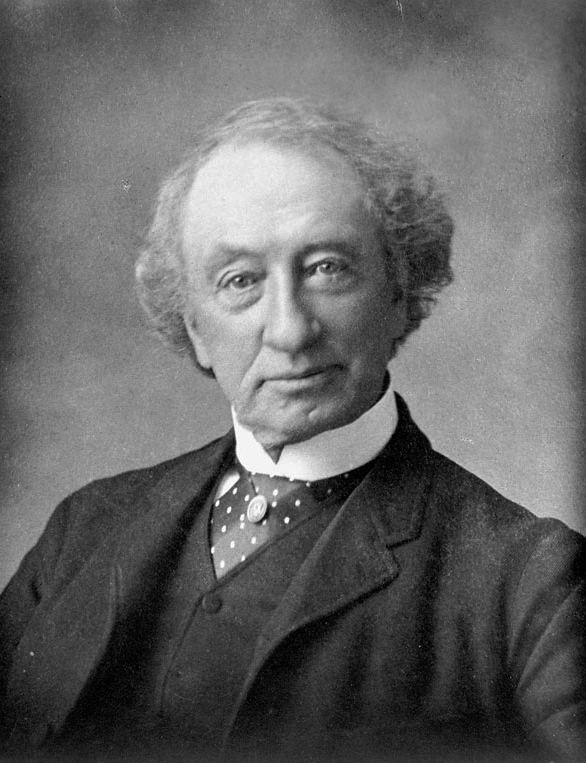A day to celebrate Canada’s fathers

The Fathers of Confederation were, for the most part, sober, serious men. A few, however, were notoriously un-sober and some were genuine firebrands.
This Father’s Day, we look back at four of the outsized characters whose efforts forged a country that reaches from sea to sea to sea.
Sir John A. Macdonald (1815-1891)

Canada’s first prime minister was responsible for the bulk of the 72 Quebec Conference resolutions that defined the Dominion’s relationship with the British Crown and hammered out the political institutions by which it was to be governed.
His four terms as prime minister were years of economic prosperity, industrial growth and rapid expansion. He spearheaded the construction of the Canadian Pacific Railway that linked the Maritimes to the Pacific and secured British Columbia’s entry into Confederation.
Sir George-Étienne Cartier (1814-1873)

A consummate deal maker who helped bring Quebec to the bargaining table, George-Étienne Cartier flirted with political extremism in his youth. He allied with the populist leader Louis-Joseph Papineau in the failed Lower Canada Rebellion of 1837, an uprising that led to over a hundred deaths and the execution or deportation of nearly a hundred participants. Cartier was exiled for a year for his role.
He managed to rehabilitate his political career back home and, years later, he became an indispensable conciliator between the French and English at the Charlottetown and Quebec conferences in 1864. He endorsed Ottawa as the capital of the new Dominion and was a champion of the Intercolonial Railway that helped secure Nova Scotia’s and New Brunswick’s entries into Confederation.
Thomas D'Arcy McGee (1825-1868)

Thomas D'Arcy McGee was a renowned orator who vehemently argued the case for Confederation, advocating cooperation between Catholics and Protestants and a religious-schools guarantee. He arranged a compromise between George-Étienne Cartier and John A. Macdonald that allowed French Lower Canada and English Upper Canada to agree to a broader union under the terms of Confederation.
As a young newspaper editor in Dublin, Ireland, by contrast, he agitated for Irish independence from Great Britain and was forced to flee the country after leading a failed 1848 rebellion. His exile eventually brought him to Montreal where his anti-British views softened over the years; he became an ardent advocate of Canadian sovereignty under the British Crown.
So much had his views changed that Irish nationalists whose cause he once championed now labelled him a traitor. McGee denounced the Fenians, a radical Irish republican organization based in the United States. In 1868, McGee was fatally shot by a Fenian sympathizer as he was on his way home from a late-night session of the House of Commons. His assassin was rushed to execution and a clear motive for the murder was never established.
George Brown (1818-1880)

George Brown, founder and editor of the Globe newspaper, the precursor of today’s Globe and Mail, was another Father of Confederation who died violently.
Brown’s long, colourful political career culminated with a Senate appointment in 1873. As a longtime political rival of Canada’s first prime minister, Sir John A. Macdonald, Brown had to wait until a change of government before being named to Parliament’s upper house.
Brown was an eloquent, often strident, advocate for causes such as responsible government and representation by population. He became one of the most effective champions of federal union between French and English and formed a coalition with John A. Macdonald dedicated to achieving it.
Brown’s other cherished cause was his opposition to slavery. He railed against the practice in newspaper editorials and helped found the Anti-Slavery Society of Canada, an organization dedicated to abolishing slavery in North America and to helping American slaves flee to Canada via the Underground Railroad.
Brown’s stinging oratory won him accolades as a speaker but earned him enemies. One of these, a disgruntled former employee, confronted and shot Brown in his office. The wound became gangrenous and Brown died from infection weeks later.
Fathers of Confederation and the Senate
In all, 12 Fathers of Confederation — one-third of them — continued their service to the young Dominion by sitting in the Senate, which became the upper house in Canada’s Parliament in 1867.
The 12 who went on to serve in the Senate were:
- George Brown (Ontario)
- Sir Alexander Campbell (Ontario)
- Jean-Charles Chapais (Quebec)
- Robert Barry Dickey (Nova Scotia)
- Thomas Heath Haviland (P.E.I.)
- Andrew Archibald Macdonald (P.E.I.)
- Jonathan McCully (Nova Scotia)
- Peter Mitchell (New Brunswick)
- Sir Oliver Mowat (Ontario)
- John William Ritchie (Nova Scotia)
- William Henry Steeves (New Brunswick)
- Robert Duncan Wilmot (New Brunswick)


